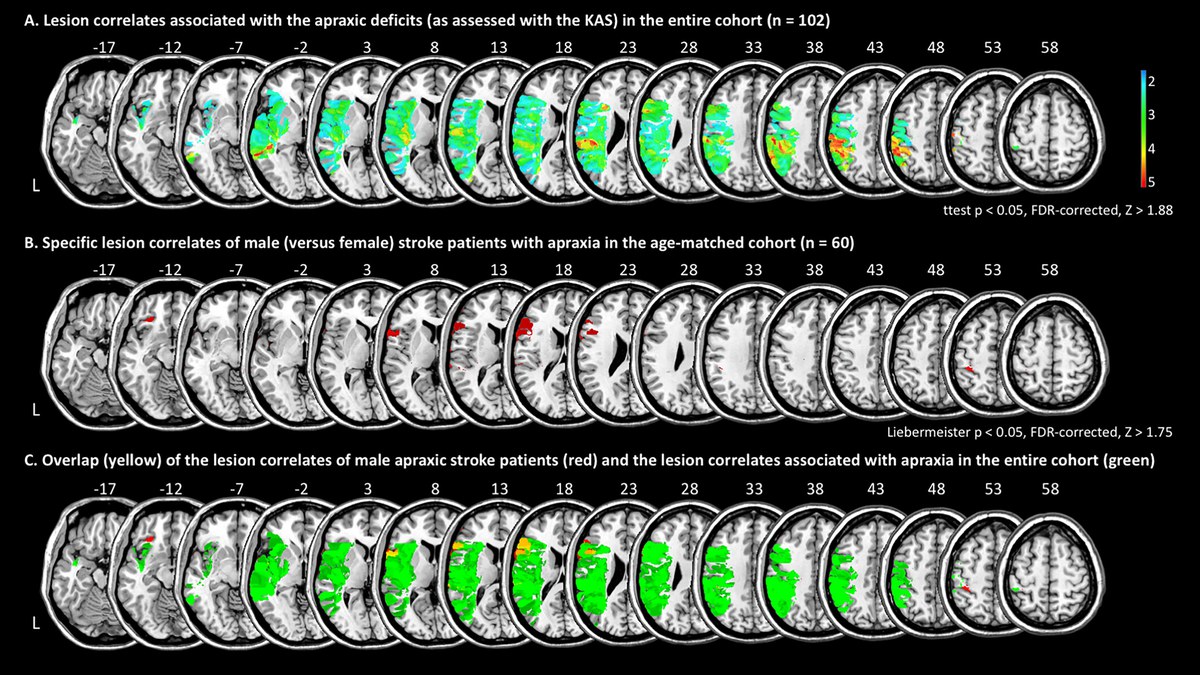Differential lesion patterns associated with stroke-induced apraxia in women and men
The motor-cognitive syndrome apraxia is a common stroke sequela and severely affects the outcome after stroke by impairing activities of daily living. Notably, like in many health conditions, there is a massive backlog regarding studies on sex differences in patients with apraxia despite common knowledge that sex influences praxis performance in healthy participants. We investigated putative sex differences in apraxic stroke patients at the behavioral and neural levels.
We retrospectively analysed the data of a cohort of 102 left-hemisphere stroke patients in the (sub)acute phase who were apraxic according to the Cologne Apraxia Screening (KAS). We conducted voxel-based lesion–symptom mapping (VLSM) to elucidate the lesion patterns. Further, in an age-matched subsample (tolerance of 5 years) with equal numbers of men and women, behavioral comparisons and a VLSM analysis were conducted to explore differential sex-related lesion patterns.
Overall, apraxic deficits were associated with lesions in the parietal, temporal, and frontal regions in the cohort of 102 left-hemisphere stroke patients (Fig. A). The age-matched cohort consisted of 30 women and 30 men and showed no significant differences in demographic and clinical characteristics. There were no performance differences between men and women at the behavioral level regarding praxis functions. In contrast, VLSM revealed differential lesion patterns by sex. Male compared to female apraxic stroke patients significantly more often showed lesions that affected the left inferior frontal gyrus (Fig. B).

The data suggest a differential organization of the praxis system in men and women, warranting further exploration.
Publication:
Kleineberg NN, Schmidt CC, Fink GR, Weiss PH (2025). Differential lesion patterns associated with stroke-induced apraxia in women and men. European Journal of Neurology, 32(5), e70201. doi: 10.1111/ene.70201
